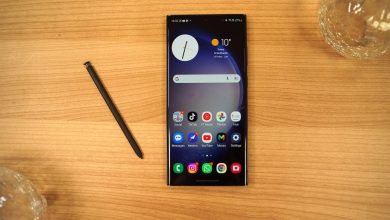The Rise of Virtual Influencers: The Future of Marketing and Advertising

In recent years, the world of marketing and advertising has witnessed a significant shift in the way brands reach their target audience. With the rise of social media, influencer marketing has become a crucial strategy for businesses to promote their products or services. However, a new trend is emerging that’s taking the industry by storm virtual influencers.
Also Read-The Future of SEO Marketing: Trends to Watch in 2024
What are Virtual Influencers?
Virtual influencers, also known as digital influencers or CGI (Computer-Generated Imagery) influencers, are fictional characters created using computer software. They have their own unique personalities, backstories, and physical appearances, just like real-life influencers. These digital avatars are designed to interact with humans on social media platforms, promoting products, services, and ideas to millions of followers.
The Rise of Virtual Influencers
The concept of virtual influencers is not new. In 2016, a digital model named Shudu Gram gained popularity on Instagram, amassing over 100,000 followers. However, it wasn’t until 2018 that virtual influencers started gaining mainstream attention. That year, Lil Miquela, a virtual influencer created by Trevor McFedries and Sara DeCou, became an overnight sensation.
Lil Miquela’s Instagram account quickly gained millions of followers, and she started collaborating with top brands like Calvin Klein and Prada. Her success paved the way for other virtual influencers like Bermuda, Imma, and Kizuna AI.
Why Brands are Flocking to Virtual Influencers.
So, why are brands turning to virtual influencers instead of traditional human influencers? Here are some key reasons:
- Cost-Effective: Virtual influencers don’t require the same level of maintenance as human influencers. They don’t need food, shelter, or clothing, which means brands can save money on production costs.
- Consistency: Virtual influencers can maintain a consistent aesthetic and tone across all their content, which is difficult for human influencers to achieve.
- Scalability: Virtual influencers can produce content at an unprecedented scale, allowing brands to reach a wider audience in a shorter amount of time.
- Control: Brands have complete control over the messaging and creative direction of virtual influencers, reducing the risk of controversy or misalignment with the brand’s values.
- Long-Term Partnerships: Virtual influencers can be programmed to maintain long-term partnerships with brands, eliminating the need for constant negotiations and contract renewals.
The Benefits of Virtual Influencers for Brands
Virtual influencers offer a range of benefits for brands looking to increase their online presence:
- Increased Engagement: Virtual influencers can engage with followers 24/7, responding to comments and messages in real-time.
- Improved Brand Awareness: Virtual influencers can promote products and services to a targeted audience, increasing brand awareness and driving sales.
- Enhanced Customer Experience: Virtual influencers can provide personalized customer service, answering questions and offering recommendations.
- Data-Driven Insights: Virtual influencers can provide valuable data insights on consumer behavior and preferences.
The Dark Side of Virtual Influencers
While virtual influencers offer many benefits, there are also concerns about their impact on society:
- Blurring Reality and Fantasy: Virtual influencers can blur the lines between reality and fantasy, making it difficult for consumers to distinguish between what’s real and what’s not.
- Unrealistic Beauty Standards: Virtual influencers often perpetuate unrealistic beauty standards, promoting unattainable physical ideals.
- Lack of Diversity: The current crop of virtual influencers lacks diversity in terms of race, ethnicity, and body type.
- Ethical Concerns: There are ethical concerns around the use of virtual influencers, particularly when it comes to transparency and disclosure.
The Future of Virtual Influencers
As technology continues to evolve, we can expect virtual influencers to become even more sophisticated:
- Advancements in AI: Advances in artificial intelligence will enable virtual influencers to learn from human behavior and adapt to changing trends.
- Increased Realism: Improvements in CGI will make virtual influencers almost indistinguishable from humans.
- Expansion into New Platforms: Virtual influencers will expand into new platforms like augmented reality and virtual reality.
Key TakeawaysHere are the main key points from this article:
- Virtual influencers are here to stay: They offer a cost-effective, scalable, and controllable way for brands to reach their target audience.
- Brands are flocking to virtual influencers: Top brands like Calvin Klein and Prada are already partnering with virtual influencers.
- Virtual influencers offer improved engagement and brand awareness: They can engage with followers 24/7 and promote products to a targeted audience.
- There are concerns around transparency and ethics: Brands must ensure they’re transparent about their use of virtual influencers and avoid perpetuating unrealistic beauty standards.
- The future is bright for virtual influencers: Advances in AI and CGI will make them even more sophisticated and realistic.
In conclusion, virtual influencers are revolutionizing the world of marketing and advertising. While there are concerns around their impact on society, the benefits they offer cannot be ignored. As technology continues to evolve, we can expect virtual influencers to play an increasingly important role in shaping the future of branding and advertising.



